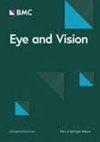Altering chromatic aberration: how this latest trend in intraocular-lens design affects visual quality in pseudophakic patients
IF 4
1区 医学
Q1 OPHTHALMOLOGY
引用次数: 0
Abstract
Chromatic aberration of the eye results from the dispersion of polychromatic light at the interfaces of ocular media. An intraocular lens (IOL) based approach utilizing the diffractive-multifocal principle has been proposed for its correction, but the clinical evidence on the impact of reducing or increasing chromatic aberration on the visual quality of pseudophakic patients remains scarce. In this cross-sectional study, longitudinal chromatic aberration (LCA) effects were studied monocularly in 37 patients implanted with a monofocal lens. LogMAR corrected distance visual acuity (VA) and defocus curve at the + 1.0 D to − 2.0 D range were assessed. Contrast sensitivity (CS) was evaluated at far and at four spatial frequencies. Measurements were performed with the eye's natural conditions, as well as with increased and corrected (by the same amount) LCA, which was altered by introducing zero-power trial triplets. The mean (± standard deviation) logMAR VA was − 0.11 ± 0.07 for the natural condition, − 0.13 ± 0.07 for the LCA-corrected eye, and − 0.06 ± 0.08 for the eye with increased LCA. A sharp decline of the defocus tolerance was found after the LCA correction with the VA value of 0.38 ± 0.15 logMAR at − 1.5 D. However, for the natural and increased LCA, it was 0.32 ± 0.16 logMAR and 0.25 ± 0.13 logMAR, respectively. CS was improved at all spatial frequencies after the LCA correction, which was closely followed by the natural-eye performance. Increased LCA resulted in reduced CS, mainly at higher spatial frequencies. We demonstrated that elevating chromatic aberration above the natural level of monofocal patients extends their depth of focus while causing a measurable albeit minimal reduction in visual function. Still, the observed changes indicate that neither correction nor increase of LCA yields a substantial clinical effect on distance VA and CS in monofocal pseudophakia.改变色差:眼内透镜设计的最新趋势如何影响假性眼病患者的视觉质量
眼睛的色差是由于多色光在眼球介质界面的色散造成的。有人提出了一种利用衍射多焦原理的眼内透镜(IOL)方法来矫正色差,但关于减少或增加色差对假性视网膜患者视觉质量的影响的临床证据仍然很少。在这项横断面研究中,对 37 名植入单焦点镜片的患者进行了单眼纵向色差(LCA)影响研究。评估了+ 1.0 D至- 2.0 D范围内的LogMAR校正距离视力(VA)和散焦曲线。对比敏感度(CS)是在远距离和四个空间频率下进行评估的。测量是在眼睛的自然条件下进行的,以及在增加和校正(等量)LCA的条件下进行的,LCA是通过引入零功率试验三胞胎来改变的。自然条件下的平均(± 标准偏差)logMAR VA 为 - 0.11 ± 0.07,LCA 校正眼为 - 0.13 ± 0.07,LCA 增加眼为 - 0.06 ± 0.08。在 LCA 矫正后,发现散焦耐受性急剧下降,- 1.5 D 时的 VA 值为 0.38 ± 0.15 logMAR。然而,自然 LCA 和增加 LCA 的 VA 值分别为 0.32 ± 0.16 logMAR 和 0.25 ± 0.13 logMAR。LCA 校正后,所有空间频率下的 CS 都有所改善,自然眼的表现也紧随其后。LCA 增加会导致 CS 降低,主要是在较高的空间频率。我们证明,将色差提高到高于单焦点患者的自然水平,可以延长他们的聚焦深度,同时导致可测量的视觉功能下降,尽管下降幅度很小。不过,观察到的变化表明,校正或增加 LCA 都不会对单焦假性视网膜病变患者的远距离 VA 和 CS 产生实质性的临床影响。
本文章由计算机程序翻译,如有差异,请以英文原文为准。
求助全文
约1分钟内获得全文
求助全文
来源期刊

Eye and Vision
OPHTHALMOLOGY-
CiteScore
8.60
自引率
2.40%
发文量
89
审稿时长
15 weeks
期刊介绍:
Eye and Vision is an open access, peer-reviewed journal for ophthalmologists and visual science specialists. It welcomes research articles, reviews, methodologies, commentaries, case reports, perspectives and short reports encompassing all aspects of eye and vision. Topics of interest include but are not limited to: current developments of theoretical, experimental and clinical investigations in ophthalmology, optometry and vision science which focus on novel and high-impact findings on central issues pertaining to biology, pathophysiology and etiology of eye diseases as well as advances in diagnostic techniques, surgical treatment, instrument updates, the latest drug findings, results of clinical trials and research findings. It aims to provide ophthalmologists and visual science specialists with the latest developments in theoretical, experimental and clinical investigations in eye and vision.
 求助内容:
求助内容: 应助结果提醒方式:
应助结果提醒方式:


